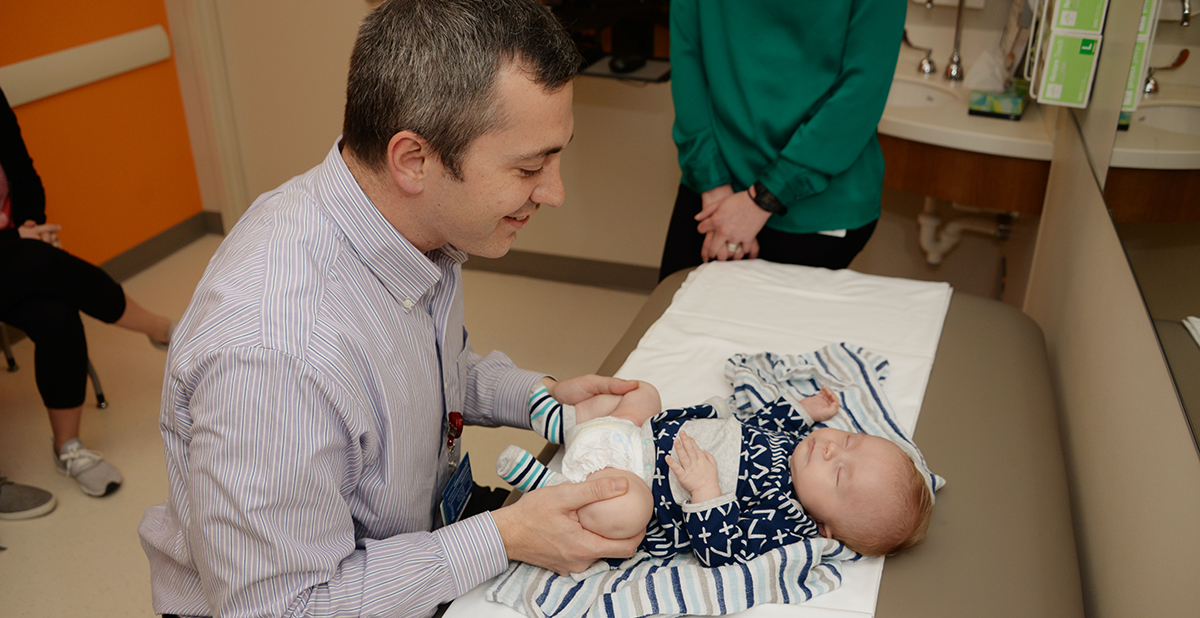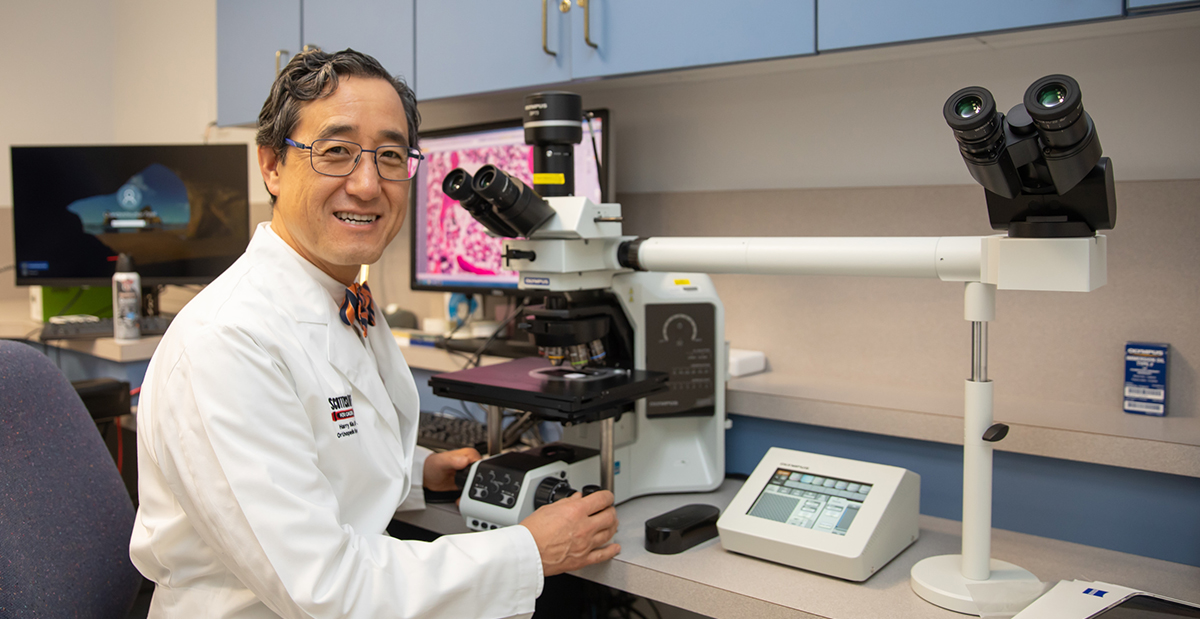
Mar 20, 2019 / Hip Disorders
Infants and Developmental Dysplasia of the Hip
In its highly regarded medical journal, Pediatrics, the American Academy of Pediatricians (AAP) just published a review of current standards for evaluating and treating a condition often recognized in newborns and infants. The condition is called developmental dysplasia of the hip (DDH). Dysplasia is a term that means poorly formed. It describes this condition well because one or both sides of the hip joint do not grow correctly as the child develops.
With later recognition of the condition, the treatment becomes more complex and may even require complex surgery. In order to minimize missed cases of hip dysplasia, the AAP recommends that pediatricians periodically screen for DDH during routine office visits from infancy until the child is walking.1 With effective screening, most cases are identified and managed during infancy, leading to complete correction of hip dysplasia and the development of normal hips.
Though this condition rarely requires surgery, Scottish Rite Hospital has a team of pediatric orthopedic surgeons focused on conditions affecting the hip. Corey S. Gill, M.D., M.A., sees these and other patients in his clinic in Frisco. Here are the top four things parents of newborns need to know and do:
When infants need treatment for hip dysplasia, our first line of defense is a Pavlik harness. The harness is generally worn for 23 hours per day for approximately six weeks, but it is removable for bathing. The harness keeps the legs flexed and rotated in the right position for normal development of the hip joint. After treatment with a Pavlik harness, we use physical exams, ultrasound and X-rays to monitor growth and confirm the hip joint is developing properly. Most children require no further orthopedic treatment after wearing a Pavlik harness.
Learn more about our treatment and research in DDH and other conditions affecting newborns.
With later recognition of the condition, the treatment becomes more complex and may even require complex surgery. In order to minimize missed cases of hip dysplasia, the AAP recommends that pediatricians periodically screen for DDH during routine office visits from infancy until the child is walking.1 With effective screening, most cases are identified and managed during infancy, leading to complete correction of hip dysplasia and the development of normal hips.
Though this condition rarely requires surgery, Scottish Rite Hospital has a team of pediatric orthopedic surgeons focused on conditions affecting the hip. Corey S. Gill, M.D., M.A., sees these and other patients in his clinic in Frisco. Here are the top four things parents of newborns need to know and do:
- Know that DDH occurs in approximately 1% of children. Though the occurrence is low, early identification of these cases is important.
- Ask for an evaluation if your baby has one of the two strongest risk factors for DDH.
- Delivered feet first (breech position)
- Related to someone who has been treated or monitored for DDH
- If your infant is diagnosed with DDH, there is a greater than 90% chance of correcting the condition without needing surgery.
- Learn how to properly swaddle. Many videos online teach “how to swaddle” your baby. Watch one of our hip experts demonstrate how to properly swaddle a baby and learn more about how swaddling can increase the risk of DDH.
When infants need treatment for hip dysplasia, our first line of defense is a Pavlik harness. The harness is generally worn for 23 hours per day for approximately six weeks, but it is removable for bathing. The harness keeps the legs flexed and rotated in the right position for normal development of the hip joint. After treatment with a Pavlik harness, we use physical exams, ultrasound and X-rays to monitor growth and confirm the hip joint is developing properly. Most children require no further orthopedic treatment after wearing a Pavlik harness.
Learn more about our treatment and research in DDH and other conditions affecting newborns.



